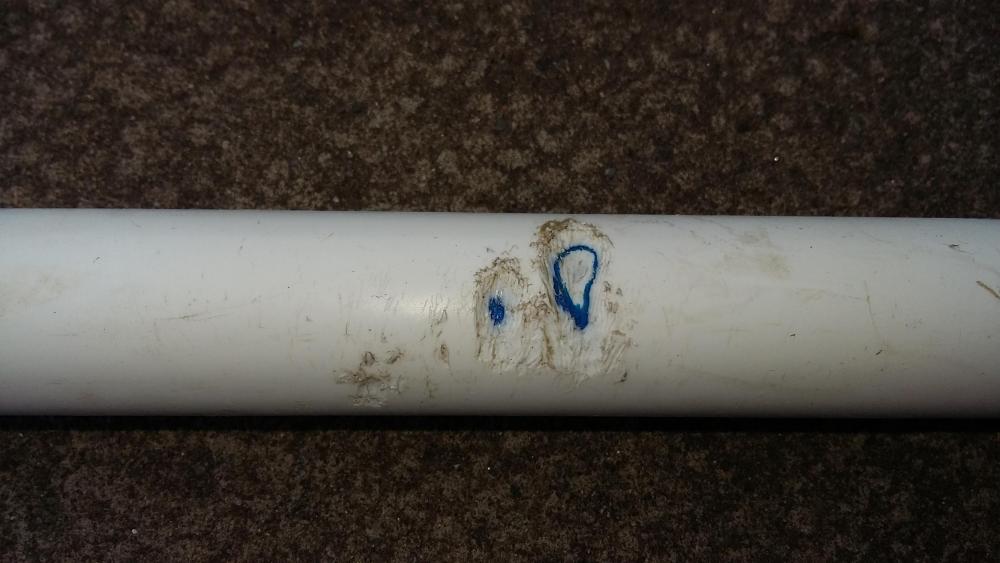Leaderboard
Popular Content
Showing content with the highest reputation on 10/08/19 in all areas
-
Could we perhaps at least let a fellow self builder settle into the community for a while before chastising them for misuse of the 'eco' word? ?. Welcome @Chedbuild, and hang onto that enthusiasm ?4 points
-
You're going to love the Mk 2 live capture mousetrap. Here's a sneak preview: The black arm can pivot downwards when the locking pin moves out of the way. This is triggered by a mouse crossing the IR proximity sensor towards the end of the arm, whilst trying to reach the peanut butter at the very end. When the arm drops, the mouse falls down into the bottom of the deep (empty) bucket and the mechanism recycles to the "cocked and ready" position, ready for the next mouse. I 3D printed the mechanism, and just need to print up a housing, plus a mount for the LCD counter module I've bought. The LCD display will be mounted remotely so that I can quickly check how many, if any, mice have been caught, so that I know when I need to empty the bucket. I might try marking the captured mice somehow, just so that I can be sure the same ones aren't coming back, although 1/2 mile seems a long trek for any mouse, especially as they also have to cross the stream.3 points
-
To be able to access a device on your own LAN from outside on the Internet requires a couple of things: 1) Your router needs to be set up to allow packets addressed to the device to pass through from the Internet. This is doable but router specific and a right PITA. 2) Your app needs to know the global address of your router or device. Both of these are tricky. Normally routers are set up to only allow in packets from the Internet which are replies to recent outgoing packets or are specially configured both for security reasons and for address-space reasons. In an act of bone-headed idiocy [¹] the original internet protocol (IPv4) was designed with only 32-bit addresses allowing roughly 4 billion devices to be addressed. Since most people use many more than one device needing addressing and there are quite a few people on the planet we've basically run out of addresses. A typical domestic DSL line only gets one IPv4 address to be shared by all the devices in the home using NAT. So your SageGlass device won't have its own globally routeable IPv4 address. As well as the addressing problem there's also security. Given the dire state of security of most computers and related devices it's best if most of the world's hackers don't have access unless it's specifically required. There are two possible solutions. One is the current version of the internet protocol (IPv6) which allows many more devices to be addressed (many billions of billions of billions, literally). Unfortunately, as a matter of general tardiness and bloody mindedness the computer industry has been very slow to take up the protocol. The standards were mostly stabilised in the late 1990s but it's still not in common use 20 years later, which is a bit pathetic really. What most IoT devices do is call back to a central server somewhere which the app can also call in to to establish communication. Presumably this is the approach SG will use for their next version. It usually works OK but it has some critical flaws: 1) You're dependent on your internet connection working to do simple things, often even if you're at home on the same LAN as the device being controlled. 2) You're dependent on them continuing to run the server. Possibly OK if you have some sort of subscription to motivate them but very dubious if they're just promising to do so indefinitely out of the proceeds of the original sale. 3) There may be serious privacy concerns depending on the function being controlled, the software quality and ethics of the company concerned and so on. [¹] Arguably based on racist assumptions, or maybe just a lack of confidence in the likely spread of internet usage.2 points
-
Hope this link works for you .... They're on Page 34 https://issuu.com/passivehouseplus/docs/ph__uk_issue_21_digital2 points
-
@joe90If you can get one with a suitable diameter sensor, a capilliary stat is likely to have tighter control I'd think. or there's this: https://www.advancedwater.co.uk/prod-217-255-1621.html2 points
-
Just remember that every isolator and connection is a prospective fault where high current consumers are concerned. I'd prefer to be able to see an isolator rather than waiting for the smoke coming out of the cupboard...2 points
-
Are, the 'other place'. Probably more tolerant as the member on here stopped using it.2 points
-
Grid switch in a larder cupboard with 20A marked Schneider switches, all run to either the dedicated socket they manage or a spur for stuff such as ovens. Each oven has its own RCBO circuit also.2 points
-
With mine the 22mm copper pipe will suffice, but I think even 22mm plastic would be stiff enough if the clips are close to the manifold.1 point
-
1 point
-
As long as the 15mm/10mm pipes coming out of the manifolds are also clipped it will be fine. I’ll try and find a photo of mine.1 point
-
I put strips of an old jute-backed axminster carpet under the gravel on the pathway. Estimated time to biodegrade = approx. 12 months. Still no sign of weeds 10 years later. Must have been a bloody good woollen carpet :))1 point
-
1 point
-
Yes. Like this .... Tops! @AliG ! SWMBO wants ......... (No more photographs OK?)?1 point
-
Oh you might have an exhaust-air heat pump in your MVHR! This one https://www.earthsaveproducts.com/products/mvhr-including-built-in-heat-pump/ecocent-air-mvhr. There is a link to the manual on the web page. Unfortunately, the manual does not seem to mention the word "boost". If that is your model, you might be interested to know that both @Mikey_1980 and @dogman have the same one.1 point
-
1 point
-
1 point
-
1 point
-
Short length of 22mm copper either end and stout pipe clips https://www.screwfix.com/p/brass-munsen-ring-22mm-5-pack/3444j and https://www.screwfix.com/p/male-munsen-ring-backplate-m10-10-pack/6952j ?1 point
-
Looks good. It should showcase the fact that mass market housing can be built well.1 point
-
1 point
-
I'd be more concerned with the etiquette of what you can smell when the door is closed ?1 point
-
Yes indeed! I have just edited it, someone said salt and I had salt on my mind, I have just checked what I have - Sodium CHLORATE! 99.9% I have a feeling it is old stock as the buckets have some fairly dated looked labels on them. It's bloody good stuff - I use it very carefully and only in certain situations.1 point
-
from a quick talk with border hydro it appears if i can get 2l persec flow rate@a140m head i could get 3.0kw X 50% power loss=1.5kw and i am pretty sure i can get alot more than that with the little burn that is flowing there at top of hill--so maybe need to check flow rate over next few months and hydro could be part of build from the start, cost approx2-2.5k--so very good in comparison to solar--as most water will be in winter when power loads are higher i can see me going hunting to find more small issues to direct same direction .LOL all sounds too good to be true --time will tell1 point
-
In ours, loos are to side of door so if it's open you see sink / bath - only exception is the downstairs WC which is long & narrow so WC is at opposite side to door (also meets the BRs)1 point
-
I used these 16 A receivers in the end, so far they have been very reliable: https://www.tlc-direct.co.uk/Products/QUR305.html1 point
-
Also looked very nice as well . Flat roofs to let the sun still get into houses during the winter.1 point
-
Just a note of caution regarding switching power supplies with remote receivers. The first set of remote switches I installed in our kitchen were switching 12 V and 24 V power supplies for the LED lighting. I used the standard light switch receivers, and both failed fairly quickly. The problem seemed to be that the small relays in the lighting receivers weren't up to handling the surge current from the power supplies, so they failed. I changed to using the high current receivers, which are a massive overkill for the power they are switching, and so far they've been reliable.1 point
-
I hate the idea of putting switches in my lovely clean glass splashback so I had the switches put in the carcus of the cabinets at each end of the row (the sides of the ovens above). This also makes the switches a lot less obvious when looking at the kitchen and makes the splashback easier to install. In general, unless they had to be in a specific place, I tried to install switches in rooms where they could not be seen, e.g. on the far side of a chimney breast seen when you enter the room. Our isolators are all in the back of a larder cupboard in the main kitchen, but in other places they are too high up to reach without a step/stool. The big multigrid switches or even worse heavy duty hob/oven switches that we used to have are something I would rather not have on display. As mentioned using the main board is probably easier to use anyway, the ovens etc are clearly marked, but this is a good point for my parents' house if/when we get permission.1 point
-
Once again @JSHarris you're coming up short of expectations. I would expect you to cobble together (from your shed of ex MOD spares) individual mouse trackers to monitor their return. Either that or blast them into space with a hobby rocket. BTW our cat is so lazy it would end up sleeping in the bucket with the mice as company.1 point
-
I can second this. I fitted a capillary stat to our buffer tank and it has pretty tight control, at a guess around 2°C I think. It's just a simple mechanical stat, with no accelerator heater.1 point
-
Hi all. We have planning permission for a 195 m2 eco home and have started to dig out on site. We are project managing ourselves and will be building using SIPs. We have a talented local builder to help us, who is hugely enthusiastic about sustainable buildings. We have a lot to learn but have already been helped out by other local self builders so want to be part of a community on this adventure.1 point
-
Given you've already wired to thermostat positions (are the back boxes on?) you can start by using as a single zone and if dont like then just cut through to the back boxes and put stats on. You'll also need to add actuators to the manifold and a wiring hub alongside it. I've used Heatmiser neostat v2's and neohubs. I've 2 manifolds with 4 and 7 loops from which i've created 6 zones (stats). The kit and caboodle to do this cost ballpark £650 plus (from the stage you're at now) it'll be an electricians day to hook it all up. Slightly off your topic Viv, I wonder if those promoting a single zone approach would do so almost regardless of house layout? I'm dealing with essentially a long bungalow with one half being bedrooms and the other being a single open plan live/dine/kitchen, and historically we never actively heat bedrooms(though they've always been upstairs so benefitted from rising heat).1 point
-
I have never seen a tank thermostat with a heater. I guess for tank heating the hysteresis is not such a big issue? I have only seen accelerator heaters in room thermostats.1 point
-
Moulds I've seen made from Melamine or Formica topped material are pretty good - release agent used in them was WD40 ! They put in a 10mm or so layer with just sand and cement from the looks of it, and then used a roller docker to settle it into the bottom of the trays and remove air, then topped them up with a mix with some 10mm gravel in. @Onoff you can buy these....1 point
-
I bought some from the manufacturers and when I went to pick them up I could see how they were made. There's no mesh inside, just soft or silver sand and cement. The moulds have the look of being painted with liquid rubber, which I imagine is a release agent. DPM would be too thick and wrinkly, but if you have any tanking liquid from your bathroom renovation that might do the job??? Make sure you buy all your sand in one go to make sure you get colour consistency1 point
-
Me too. I'm afraid I fitted a standard MK cooker switch on the wall to isolate ours. Given there are several other double gang outlets on the same wall, having a cooker switch on there doesn't look out of place.1 point
-
1 point
-
Is there an adjacent room you can bung them all in? Ours are all together out of sight on the pantry wall.1 point
-
To control a single set of lights you'll need to go: 230vac > CV05 > input (230vac) side of transformer > "fairy lights". So one transformer per set of lights. If using Quinetic you can get 3 gang switches even ones suitable for outside. You can also get a dual receiver, their QUR323, not a 3 channel one though sadly... or You CAN also get the QUR302 DC receiver that'll switch 24v DC at 5A. So trannie output into the DC 10/24 side. I'd stick with separate trannies (& receivers) or it's one out all out.1 point
-
In case it is not obvious, I will make it so. This stuff is concentrated, you dilute it massively before use. 5L will last you a very long time and cover a large area.1 point
-
On it's own, a mechanical thermostat has huge hysteresis. They overcome this with an "accelerator heater" which is a posh name for a tiny (and I mean tiny) heater inside the thermostat. This is usually just a small resistor. The "accelerator heater" is turned on when the thermostat is "on" So your heating is on, the accelerator heater is on, so the local air inside the thermostat is slightly warmer than the room air. The thermostat is calibrated to allow for this. So the thermostat switches off at say 20 degrees. the accelerator heater goes off and the local air is no longer heated. So the air inside the thermostat cools to room air temperature. By doing this, as long as the accelerator heater is sized to uplift the internal temperature by an amount equal to the hysteresis, then you have eliminated that hysteresis. So as well as live in, and switched live out, you need the third wire connected to neutral, just to power the little accelerator heater when the thermostat is on.1 point
-
You need a P3 respirator or an equivalent to the 3M 6001 filters. Animals must be kept away until the product is completed dry, at least 24 hours. Personally I would not let my pet near it for 2-3 days but I’m very sensitive to the subject after loosing a dog to poisoning by a farmer using illegal pesticides (another story for another day).0 points
-
0 points
-
Back to my neighbours plumbing. Leak No 2 found and fixed. This was hot feed to the two en-suites. Mouse 1: Pipe 0 I have never been a great fan of plastic pipe. The mouse would not have done that to a length of copper. It was squirting out a fine jet of water that was landing on the ceiling about 2 feet away. Leak No 1 is as yet unfound, but it has (for the time being?) stopped leaking. That is "ongoing" The heating system had lost pressure overnight, so I left it pressurised a bit higher to provoke the leak to show itself. At least the mystery of 2 simultaneous leaks is solved. There is a moose loose in the hoose.0 points






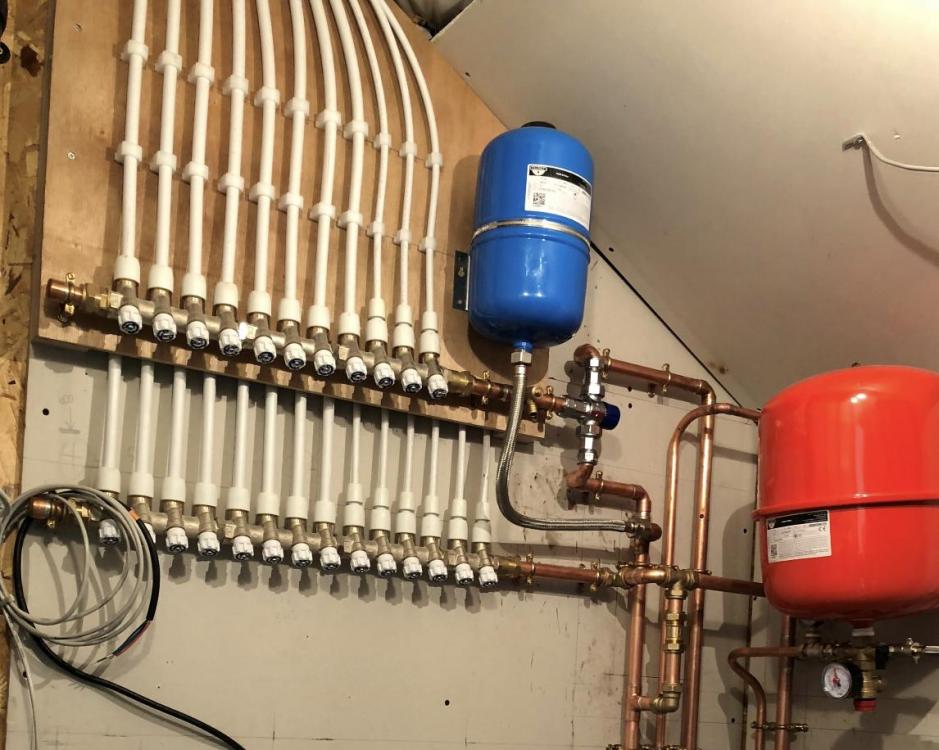

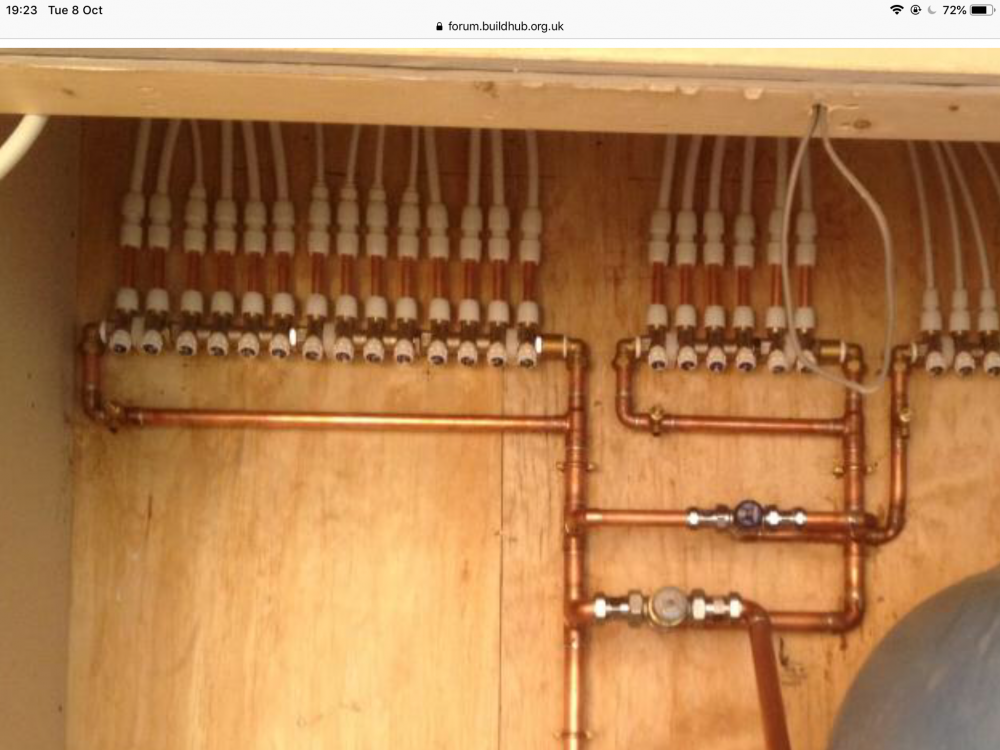


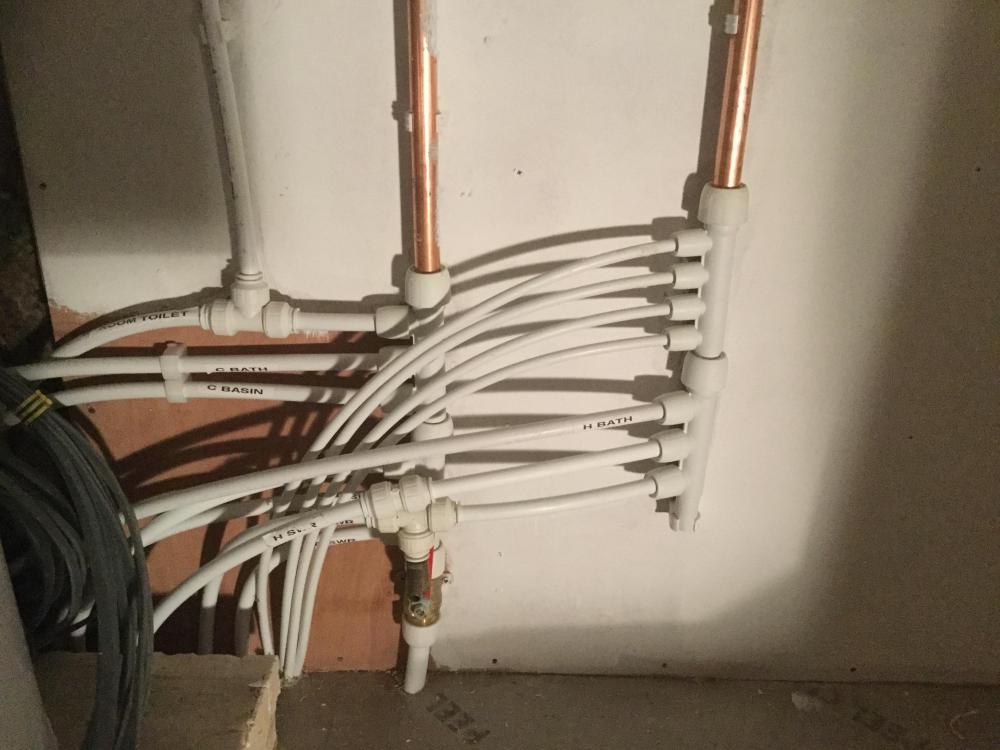
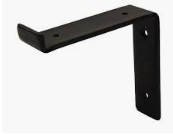


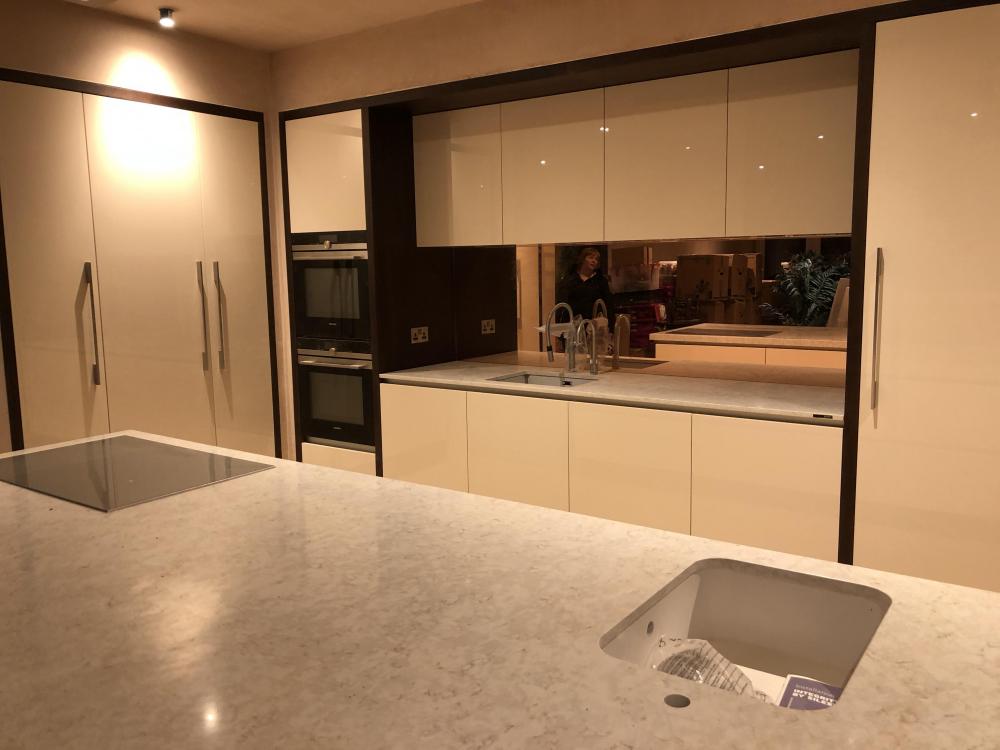

.jpg.c21f3ac78c9b7efd90cbdcb312744dc5.thumb.jpg.7adcad4c0e384f5ecd7d56b0618df6e5.jpg)


